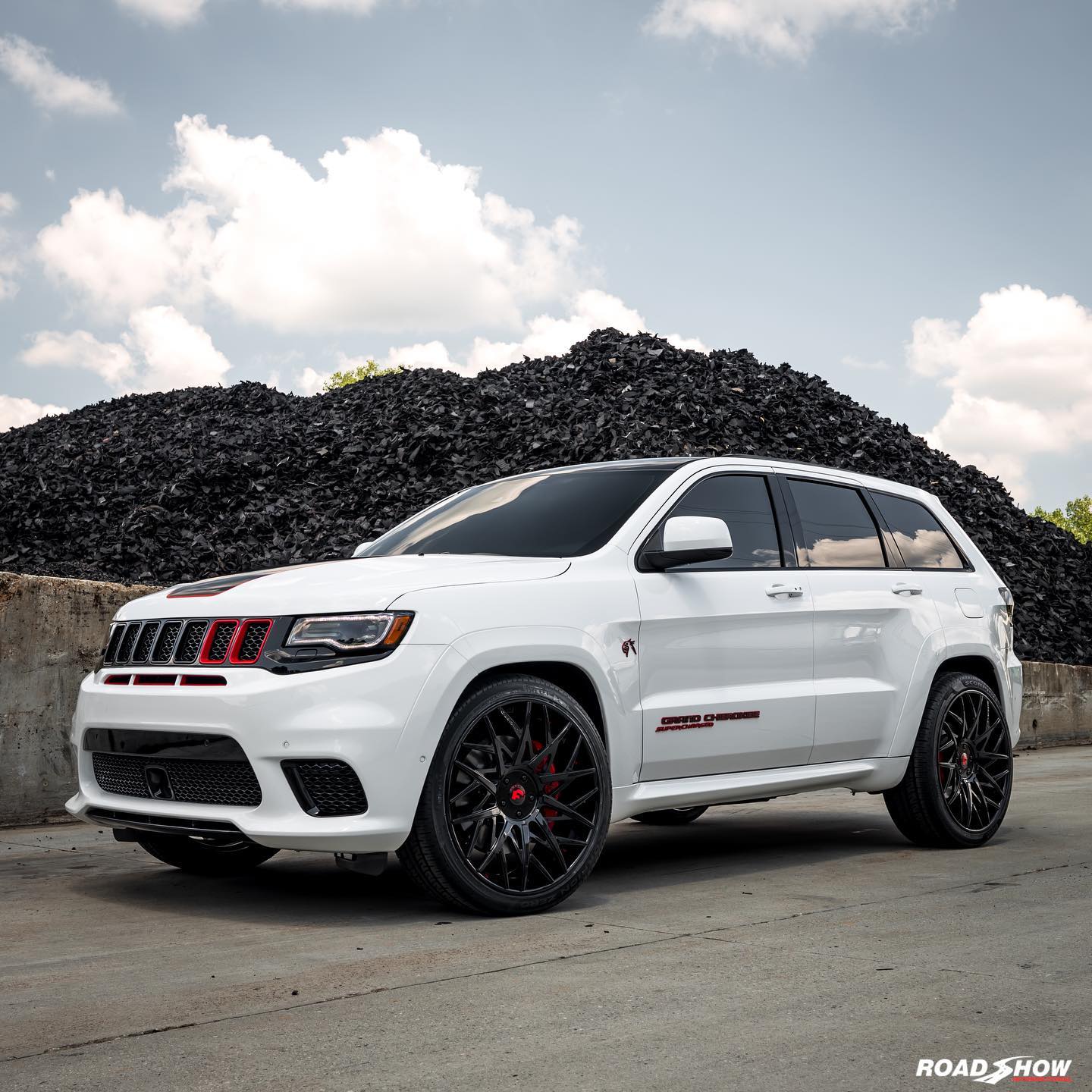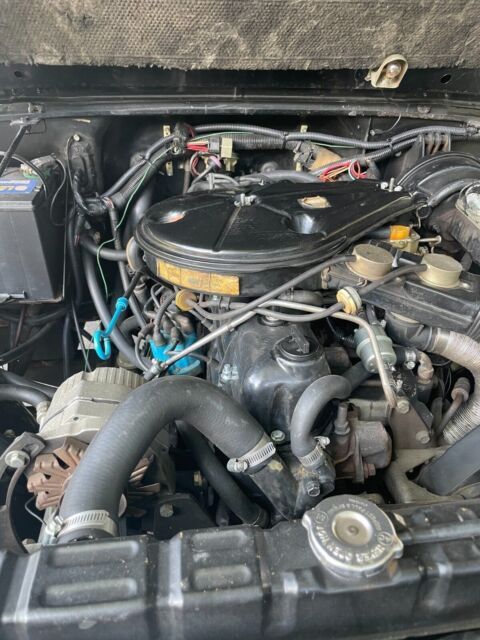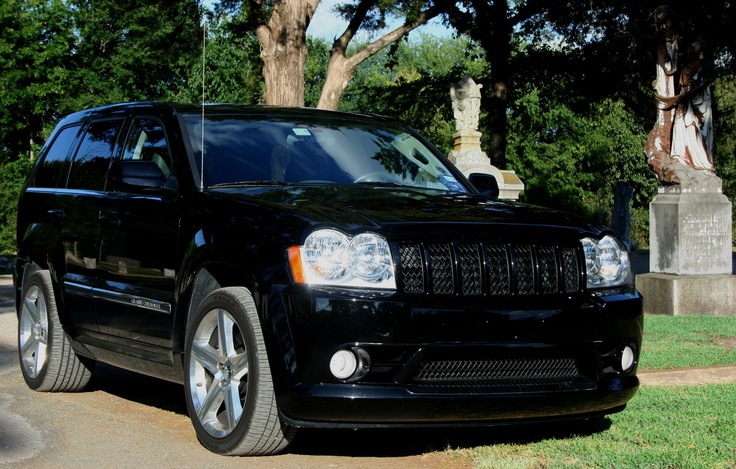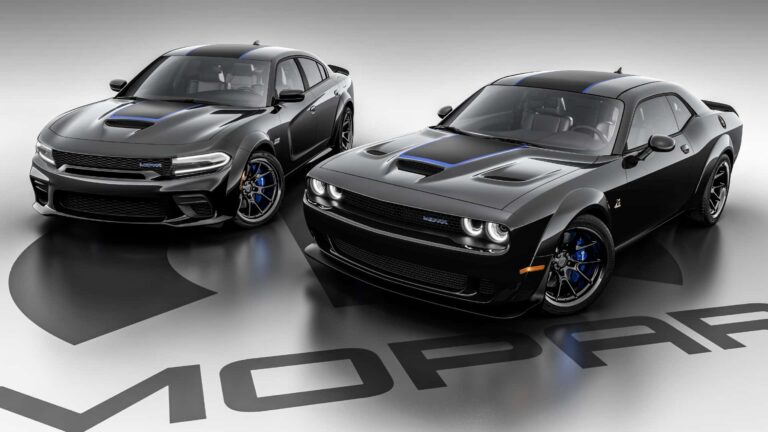Jeep J10 Pickup Trucks For Sale: Your Comprehensive Guide to Owning a Classic Workhorse
Jeep J10 Pickup Trucks For Sale: Your Comprehensive Guide to Owning a Classic Workhorse /jeeps.truckstrend.com
In an era dominated by sleek, technologically advanced pickup trucks, there’s a growing allure for the raw, unpretentious charm of vintage iron. Among the most sought-after classic utility vehicles is the Jeep J10 pickup truck. A true testament to American automotive engineering of its time, the J10 represents an iconic blend of rugged capability, distinctive styling, and enduring reliability. For enthusiasts and practical users alike, finding a Jeep J10 pickup truck for sale isn’t just about acquiring a vehicle; it’s about investing in a piece of automotive history, a workhorse that refuses to quit, and a canvas for unique customization.
This comprehensive guide aims to navigate the landscape of buying a Jeep J10, offering insights into what makes these trucks special, where to find them, what to look for, and what to expect in terms of ownership and investment. Whether you’re a seasoned collector, an off-road adventurer, or simply seeking a unique daily driver, the J10 holds a timeless appeal that continues to captivate.
Jeep J10 Pickup Trucks For Sale: Your Comprehensive Guide to Owning a Classic Workhorse
I. A Legacy of Rugged Reliability: What is the Jeep J10?
The Jeep J10 is a full-size pickup truck produced by AMC’s Jeep division from 1974 to 1988. It was part of the "SJ" platform, which also underpinned the iconic Wagoneer and Cherokee (full-size SJ models). Essentially, the J10 was the half-ton variant of Jeep’s larger J-Series trucks, succeeding earlier nomenclature like the J-4000.
Built on a robust ladder frame, the J10 was designed for serious work and formidable off-road prowess. It typically featured solid axles front and rear, heavy-duty suspension, and the legendary Quadra-Trac full-time four-wheel-drive system (though part-time 4×4 was also available, especially later in its production run). Under the hood, buyers had a choice of AMC’s venerable inline-six engines (most commonly the 258 cubic inch I6) and a range of V8s, including the 360 and 401 cubic inch powerplants, known for their torque and durability.
What sets the J10 apart today is its sheer mechanical simplicity and build quality. Unlike modern trucks laden with complex electronics, the J10 is a straightforward machine, making it relatively easy to maintain and repair for those with basic mechanical knowledge. Its distinctive styling, characterized by its wide stance, prominent grille, and classic lines, ensures it stands out in any crowd.
II. Why Buy a Jeep J10 Today? The Allure of a Classic Workhorse
The decision to purchase a vintage vehicle like the Jeep J10 is often driven by more than just utility. It’s a blend of passion, practicality, and a desire for something unique.

- Nostalgia and Classic Appeal: For many, the J10 evokes a sense of nostalgia for a simpler time. Its design is unmistakably classic American truck, offering a unique aesthetic that modern vehicles can’t replicate. It’s a head-turner, sparking conversations wherever it goes.
- Unmatched Durability: These trucks were built to last. Their robust construction, heavy-duty components, and relatively low-tech nature mean they can withstand significant abuse and continue to perform for decades if properly maintained.
- Off-Road Prowess: With its strong chassis, ample ground clearance, and proven 4×4 systems, the J10 is an incredibly capable off-road vehicle. It can tackle challenging terrain with ease, making it a favorite for adventurers and those living in rural areas.
- Versatility: The J10 can serve many purposes. It’s an excellent work truck for hauling and towing, a reliable farm vehicle, a fun weekend cruiser, or even a unique daily driver for those who appreciate its rugged charm. Many are also popular platforms for restoration projects or custom builds.
- Investment Potential: Well-preserved or expertly restored J10s are appreciating in value. As fewer examples remain in good condition, their desirability among collectors and enthusiasts grows, potentially offering a solid return on investment over time.

III. Navigating the Market: Where to Find a Jeep J10 For Sale
Finding the right Jeep J10 requires patience and a strategic approach. These aren’t vehicles you’ll typically find on a new car lot.

- Online Marketplaces:
- Craigslist & Facebook Marketplace: Excellent for finding local, privately listed trucks. Be prepared for a wide range of conditions and negotiate carefully.
- eBay Motors: Offers a broader geographical reach and often includes more detailed listings with multiple photos.
- Dedicated Classic Car/Truck Websites: Sites like Hemmings, ClassicCars.com, and Bring a Trailer (for higher-end examples) specialize in vintage vehicles and often feature well-documented J10s.
- Specialized Forums & Clubs: Jeep J-Series forums (e.g., FSJNetwork.com) and local Jeep clubs are fantastic resources. Members often sell their trucks directly, and you can tap into a wealth of knowledge from experienced owners.
- Classic Car Dealerships & Restorers: These outlets often have fully restored or well-maintained J10s. While prices will be higher, you’re more likely to find a turn-key vehicle with a professional inspection and potentially a warranty.
- Auctions: Live and online classic vehicle auctions (e.g., Mecum Auctions, Barrett-Jackson, although J10s are less common here than other classics) can be a source for unique or high-quality examples. Local estate or farm auctions might also turn up hidden gems.
- Word of Mouth: Sometimes, the best deals are found through connections. Let local mechanics, vintage car enthusiasts, and friends know you’re looking.
IV. What to Look For: Essential Inspection Points When Buying a J10
A thorough inspection is crucial when considering a vintage truck like the J10. Bring a knowledgeable friend or mechanic if possible.
- Rust (The Silent Killer): This is the number one enemy of old trucks. Inspect the frame rails (especially near the spring hangers and body mounts), floor pans, rocker panels, cab corners, bed floor, and wheel wells. Surface rust is manageable, but extensive structural rust is a red flag.
- Engine & Drivetrain:
- Check for fluid leaks (oil, coolant, transmission, differential).
- Listen for unusual noises (knocks, rattles, excessive lifter noise).
- Observe exhaust smoke (blue for oil, white for coolant, black for rich fuel).
- Test the 4×4 system thoroughly in both high and low range.
- Check transmission shifts for smoothness and engagement.
- Suspension & Steering:
- Look for worn bushings, loose ball joints, and leaky shocks.
- Check for play in the steering wheel and steering components (tie rods, drag link).
- Drive over bumps to assess ride quality and listen for clunks.
- Brakes:
- Inspect brake lines for rust or leaks.
- Check pedal feel – it shouldn’t be spongy or require excessive force.
- Test for straight stopping without pulling.
- Electrical System:
- Test all lights (headlights, taillights, turn signals, brake lights), gauges, wipers, and heater/AC (if equipped).
- Look for frayed or spliced wiring, which can indicate neglect or botched repairs.
- Interior:
- Assess the condition of seats, dashboard, door panels, and headliner.
- Look for signs of water leaks (stains, musty smell).
- Ensure all windows and door locks operate correctly.
- Documentation:
- Ask for service records, past registration, and a clear title. A truck with a well-documented history is often a safer bet.
- Modifications:
- Many J10s have been modified over the years. Evaluate the quality of any aftermarket parts or custom work. Poorly installed lift kits, engine swaps, or electrical modifications can lead to significant headaches.
V. Pricing Your Dream J10: A Comprehensive Guide
The price of a Jeep J10 varies widely based on several factors: condition, engine, drivetrain, modifications, location, and overall originality. Below is an approximate price table, but always remember that the market is dynamic and individual examples can deviate significantly.
| Condition Category | Price Range (USD) | Description / Notes |
|---|---|---|
| Project Truck | $2,500 – $7,000 | Non-running or running with major mechanical issues. Significant rust, body damage, or missing components. Requires extensive restoration, time, and money. Ideal for experienced DIYers or those seeking a complete custom build. |
| Fair Condition | $7,000 – $15,000 | Running and driving, but likely needs substantial mechanical attention (e.g., engine refresh, transmission work, suspension overhaul). Obvious rust issues, worn interior, faded paint. Suitable for a rolling restoration or a reliable work truck with some TLC. |
| Good Condition | $15,000 – $25,000 | Mechanically sound with all major systems functioning. Minor cosmetic flaws (small dents, some fading). Minimal surface rust. Can be driven regularly. A solid base for minor improvements or as-is enjoyment. |
| Excellent Condition | $25,000 – $40,000+ | Very clean, well-maintained, and mostly original. Minimal to no rust. Paint and interior are in great shape. Engine runs strong, transmission shifts smoothly. May have had some minor restoration work. Ready for show or reliable classic driving. |
| Restored/Concours | $40,000 – $70,000+ | Professionally restored to original or better-than-original condition. Every component addressed, often with upgraded but period-correct parts. Show-quality paint, pristine interior, fully sorted mechanicals. Rare examples like Honcho or Golden Eagle packages in this condition can fetch higher. |
Factors Influencing Price:
- Engine: V8 models (especially 401s) often command a premium over the 258 I6, though the I6 is known for its reliability.
- 4×4 vs. 2WD: 4×4 versions are significantly more desirable and valuable.
- Trim Levels: Rare trims like the "Honcho," "Golden Eagle," "10-4," or "Laredo" packages with unique graphics and options can fetch higher prices.
- Mileage: Less critical than overall condition for older vehicles, but lower mileage can still be a selling point for well-preserved examples.
- Geographic Location: Rust-free states (Southwest, West Coast) generally have higher-priced, better-condition examples.
VI. Ownership & Maintenance: Keeping Your J10 Running Strong
Owning a J10 is a commitment, but a rewarding one. While they are robust, they still require attention.
- Common Issues: Rust is the biggest concern. Other common issues include vacuum leaks (especially with older emissions systems), carburetors needing rebuilding, worn suspension components, and electrical gremlins due to aging wiring.
- Parts Availability: Surprisingly, mechanical parts for AMC engines and drivetrains (like the Dana axles and Borg-Warner transfer cases) are generally available from aftermarket suppliers. Body panels, specific trim pieces, and interior components can be harder to source and may require searching salvage yards, specialty forums, or even custom fabrication.
- Routine Maintenance: Regular oil changes, fluid checks, greasing chassis components, and inspecting belts/hoses are paramount. Don’t skip on preventative maintenance.
- Finding Mechanics vs. DIY: Many modern mechanics are unfamiliar with these older carbureted engines and basic 4×4 systems. You’ll either need to find an experienced classic car specialist or be prepared to learn some DIY mechanics. The J10’s simplicity makes it an excellent platform for learning.
VII. The Challenges and Rewards of J10 Ownership
Like any classic vehicle, owning a J10 comes with its unique set of challenges and immense rewards.
Challenges:
- Fuel Economy: Don’t expect modern MPG figures. These trucks are thirsty, especially the V8 models.
- Parts Sourcing: While mechanicals are generally okay, specific body, interior, or trim parts can be a scavenger hunt.
- Rust Management: Ongoing battle, especially if you live in a region with road salt or high humidity.
- Finding Knowledgeable Mechanics: It can be difficult to find shops familiar with older carbureted engines and vintage 4×4 systems.
- Comfort & Modern Amenities: No power windows, touchscreens, or advanced safety features. It’s a raw driving experience.
Rewards:
- Unique Vehicle: You won’t see many J10s on the road, making yours truly distinctive.
- Strong Community: A passionate and helpful community of J-Series owners exists, offering advice, parts, and camaraderie.
- Reliable Workhorse: Despite its age, a well-maintained J10 is a dependable truck for work, recreation, or daily driving.
- Classic Status: Owning a piece of American automotive history that continues to appreciate in value and appeal.
- Satisfaction: The sheer joy and satisfaction of driving, maintaining, and restoring a rugged, iconic vehicle that stands apart from the crowd.
Conclusion: Your Journey to J10 Ownership
The Jeep J10 pickup truck stands as a monument to a time when vehicles were built with purpose, durability, and a distinct character. For those seeking a classic truck that embodies rugged independence and timeless style, the J10 offers an unparalleled experience. It’s more than just a means of transport; it’s a statement, a project, and a gateway to a vibrant community of enthusiasts.
While the search for a J10 for sale requires diligence, and ownership demands a degree of commitment, the rewards far outweigh the challenges. The roar of an AMC V8, the unmistakable silhouette, and the sheer capability of these vintage Jeeps ensure that the J10 will continue to carve its niche in the hearts of truck lovers for generations to come. Your journey to owning a piece of Jeep legend begins now.
Frequently Asked Questions (FAQ) about Jeep J10 Pickup Trucks
Q1: Are J10 parts hard to find?
A1: Mechanical parts for the AMC engines (258 I6, 360/401 V8s) and common drivetrain components (Dana axles, Borg-Warner transfer cases) are generally available through aftermarket suppliers and online specialty stores. However, body panels, specific interior trim, and unique exterior pieces can be very challenging to find and may require searching salvage yards, dedicated J-Series forums, or custom fabrication.
Q2: What’s the fuel economy like for a J10?
A2: J10s are not known for their fuel efficiency. Expect anywhere from 8-15 miles per gallon (MPG) depending on the engine (V8s are thirstier), drivetrain (4×4 vs. 2WD), transmission, and driving style. Properly tuned engines and modern carburetor upgrades can help slightly, but don’t expect Prius-level economy.
Q3: Can a J10 be a daily driver?
A3: Yes, a well-maintained and sorted J10 can certainly be a daily driver. However, be prepared for a raw driving experience compared to modern trucks – no power amenities, less sound deadening, and older suspension technology. Reliability largely depends on the vehicle’s condition and how well it has been cared for.
Q4: What’s the difference between a J10 and a J20?
A4: Both the J10 and J20 are part of the full-size J-Series pickup line. The primary difference lies in their payload capacity and heavy-duty components. The J10 is a half-ton truck, while the J20 is a three-quarter-ton or one-ton heavy-duty truck, featuring stronger axles, springs, and often larger brakes designed for heavier hauling and towing.
Q5: Are there common rust spots on J10s?
A5: Yes, rust is a primary concern. Common rust spots include the frame rails (especially near spring hangers and body mounts), floor pans, rocker panels, cab corners, lower fender areas, and the bed floor. Thorough inspection of these areas is crucial when considering a purchase.
Q6: What engines were available in the Jeep J10?
A6: Over its production run (1974-1988), the J10 was offered with several AMC engines:
- Inline-6: The 258 cubic inch (4.2L) I6 was a common and very reliable option.
- V8s: The 360 cubic inch (5.9L) V8 was prevalent, and for a short period, the powerful 401 cubic inch (6.6L) V8 was also available, particularly in earlier models.






